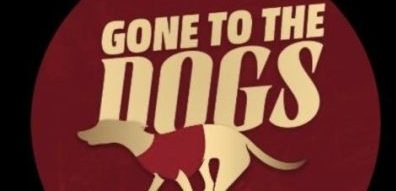Retirement from a Trust perspective
Since becoming a Trustee of the Brighton RGT in November 2021, when the Trust had been told by the previous Trustees that it was to be closed in March 2022, along with my fellow Trustees, the staff and volunteers, we have managed to turn things around, financially at least, but are suffering from the cost of living crisis as much as anyone else, and just not finding enough homes to meet the never ending surplus of supply coming from the “industry”.
Prior to Covid the Trust used to regularly rehome up to 140 hounds a year, the current number is circa 70, despite a massive effort to make the general public in Sussex aware of greyhounds making excellent pets, as we all know. Until very recently, we received no support from the local press, but with some help from one of our Patrons, the author Peter James, that has changed and Sussex World are giving us coverage both online, and in their numerous local weekly publications.
It has always been easier to rehome a pretty brown & white bitch, than a big black dog, but is seemingly more difficult than ever now that demand has become much weaker. My estimation is that 70% of the dogs we receive, mainly from Hove trainers are black.
Now that we have the power of the local press on our side, I thought it would be a good idea to get the problem out there and make a strong case for the black boys and girls. When I first became interested in greyhounds, back in 1960, I rehomed a lovely red fawn dog, Technical Hitch, trained by Arthur Hancock, the predominate colour in those days certainly wasn’t black, unless I am mistaken.
I’m sure I have read articles you have written in the past on the subject, of how black became the order of the day, but any information you can give me that will make the article we submit for publication is both factual and meaningful, will be gratefully received.
I wish I knew how to solve the present rehoming crisis, but the starting point has to be by way of a serious reduction in the volume of racing, backed up by a national advertising campaign, to support the efforts the dedicated rehoming kennels do to make the public aware of greyhounds as pets, and some kind of financial incentive for the adopters, many of whom are struggling to support their families, perhaps one years free Pet Insurance cover, for example.
The question must also be asked as to why an industry that generates so much wealth has to rely on charities to deal with its unwanted stock.
Hoping you can assist.
Kind regards,
Mike Harrod
Chairman of Trustees
Thank you for the insight Mike.
I believe that the subject of re-homing from a Trust kennel perspective is a subject that needs exploration in greater depth and I would be delighted if you could expland on your ideas and observations in a future ‘Thinking Thursday’ Zoom conversation.
In reference to greyhound colouring, I am aware of a great deal of interest in the subject, particularly from owners of ex-racers. So hopefully the following may be of some interest.
I believe you may be referring to an article about the early English Derby winners. Between 1927 and 1950, excluding most of the war years, there were 14 brindle Derby winners, five fawns but only one black. The general perception at the time was that the brindle followed the introduction of bulldog breeding.
During the 1960s and 70s, there was a broad association between ‘white and . . .’ with coursing dogs, particularly in the post Newdown Heather era. He threw virtually nothing but but black and ‘coloured’ dogs. (There were suspicions about any apparent Newdown Heather pup that wasn’t registered with those colours).
Blues were very rare during this time and there were many more shades of brindle (dark, blue, red, black, silver) and fawns of various types and plenty of them.
There doesn’t have seem to have been massive change until the influx of the Australian bloodlines by the late 1990s. Suddenly there was a massive increase in black and blue pups, with the Frightful Flash profile of black body and white socks – though many others produced the same stamp, notably Top Honcho.
Some Aussie breeders I spoke to made the connection between the huge upswing in the number of blues and the great brood bitch Promises Free who had a whole army of fabulously successful sons at stud: Amerigo Man, West Cape, Bogenfel, Walkabout Sid and Carnival Boy. You do well to find a pedigree that doesn’t feature Promises Free.
(Perhaps only right that there should be so many ‘grey’ greyhounds?)
We had a short spell where ‘dun’ appeared. Every one, as far as I am aware, was associated with Staplers Jo. Like blue, dun was an alele of black and was accompanied by pink nose leather and, quite often, saffron coloured eyes.
Next was the American influx, which was led by Hondo Black, a sire who only threw black pups. But once he had opened the floodgates, the new colours came thick and fast including the return of more fawns and brindles, including some variations we had never seen before. Some were semilar – their ‘fawn brindle’ was our ‘silver brindle’ – my personal favourite.
In addition, the Americans brought two coat variations that were not unknown, but were very rare previously, the ‘tri-coloureds’ and ‘ticks’.
I had hoped that the American bloodlines might offer some respite from the black Aussies, though given the genetic dominance of that colour, the omens do not look great – as explained by the former Keeper of the Australian Stud Book Gavin Fitzpatrick in his ‘rules of thumb’ which he collated roughly 30 years ago.
Floyd Amphlett – Editor













